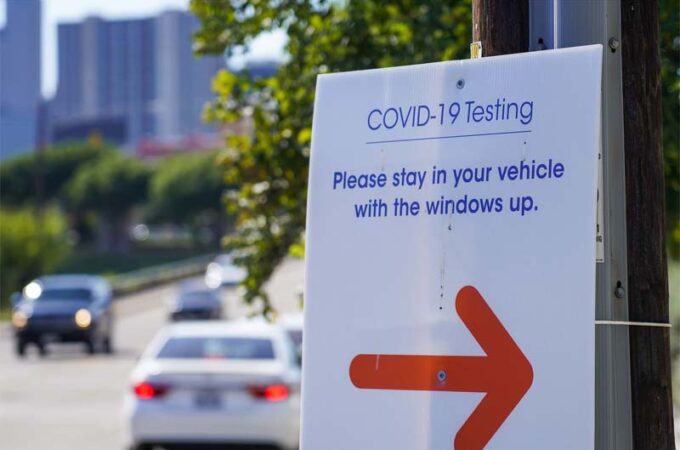On July 21st, the CDC quietly published a “Lab Alert” detailing a change in their stance on COVID-19 testing. Well, not actually COVID-19 testing, they changed their stance on SARS-CoV-2 testing. And there’s a huge difference between the two.
Why is this important? I’ll tell you that after I tell you this.
The difference is that SARS-CoV-2 is the virus that causes COVID-19. SARS-CoV-2 is not a disease. COVID-19 is.
You know all of those testing sites that popped up last year, the ones that tens of millions of people flocked to? They were hyped as “COVID-19 Testing Facilities”, but that’s not what they were. They were SARS-CoV-2 testing facilities. And they all used the PCR test.
A PCR test, specifically the CDC 2019-Novel Coronavirus (2019-nCoV) Real-Time RT-PCR Diagnostic Panel, had an Emergency Use Authorization from the FDA allowing it to be used for the detection of SARS-CoV-2. For short, we’re going to call it “the PCR test” but keep in mind there are many different types of PCR tests and each is designed to test for a specific thing.
In my very simplified view of virology, a topic in which I’m not even remotely qualified, the three-step process goes something like this:
Step One: You may be exposed to the virus.
Step Two: If you’re exposed to the virus, you might be infected by it.
Step Three: If you become infected by the virus, you might show symptoms of a disease.
The PCR test that millions of people believed was telling them if they had COVID-19 or not was, at best, only telling them if they had been exposed to the virus that causes the disease. The test can only detect the virus, but people were led to believe that what it was detecting was an infection.
So, everyone who was exposed to the virus was assumed to have been infected and told to self-quarantine. Local governments looked at the exposure numbers and inferred that it was telling them infection numbers. They assumed that a “case of exposure” meant a “case of infection”.
Then they used their faulty assumptions to justify locking down everything. And a lot of people believed that those faulty assumptions were correct.
However, just because you were exposed to a virus doesn’t automatically mean that you’ve been infected by it. But that’s the assumption that was made. Suddenly we were all learning about “asymptomatic” people who had been infected but didn’t have symptoms of the disease.
A more likely explanation is that they were exposed to the virus (Step One) but were never actually infected by it (Step Two), which means they wouldn’t have any symptoms (Step Three).
Now, back to the CDC’s Lab Alert. The CDC said they’ll withdraw their request for an Emergency Use Authorization for the PCR test. Testing facilities will need to switch to “one of the many FDA-authorized alternatives.”
The good news is that no one will be able to use the PCR test to detect SARS-CoV-2 which means that nobody will be able to misinterpret a case of detected SARS-CoV-2 as a case of COVID-19.
Unfortunately, this change isn’t going into effect until December 31st. Which means there’s plenty of time left this year for another round of lockdowns based on more faulty assumptions and misinterpretation of test results.
But here’s the thing:
The PCR test won’t be on the short list of FDA-authorized alternatives that the testing facilities will be able to use. Think about that. We’ve been using the PCR test under an Emergency Use Authorization since March of LAST YEAR. But, after nearly a year and a half of use, it still isn’t one of the approved testing methods. And it’s not going to be.
The PCR test was good enough to justify bringing our economy to its knees, putting tens of thousands of companies out of business and millions of people out of work. But come December 31st, it won’t be good enough to continue to be used. For anything.
Related Articles:
COVID Testing FAIL
COVID Testing is Potentially Useless


